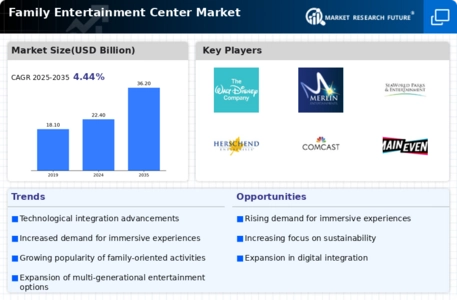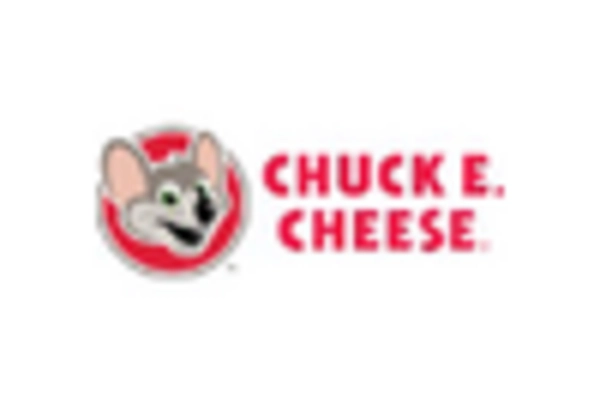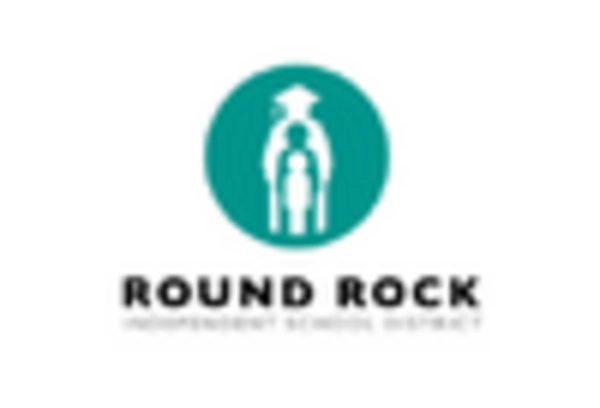The Family Entertainment Center Market is currently characterized by a dynamic competitive landscape, driven by evolving consumer preferences and technological advancements. Key players such as Dave & Buster's (US), Chuck E. Cheese (US), and Main Event Entertainment (US) are strategically positioning themselves through innovation and regional expansion. Dave & Buster's (US) has focused on enhancing its gaming offerings and integrating more immersive experiences, while Chuck E. Cheese (US) emphasizes family-friendly environments and educational play. Main Event Entertainment (US) is expanding its footprint by opening new locations, thereby increasing its market share and enhancing customer engagement through diverse entertainment options. Collectively, these strategies indicate a shift towards creating more engaging and interactive experiences, which is reshaping the competitive environment.
In terms of business tactics, companies are increasingly localizing their offerings to cater to regional tastes and preferences, which appears to be a critical factor in their operational success. The market structure is moderately fragmented, with numerous players vying for consumer attention. However, the influence of major companies is substantial, as they set trends that smaller entities often follow. This competitive structure allows for a variety of entertainment options, appealing to a broad demographic, while also fostering innovation as companies strive to differentiate themselves.
In August 2025, Dave & Buster's (US) announced the launch of a new virtual reality gaming experience, which is expected to attract a younger audience and enhance customer retention. This strategic move not only aligns with current trends in digital entertainment but also positions the company as a leader in immersive gaming experiences. By investing in cutting-edge technology, Dave & Buster's (US) aims to create a unique value proposition that could significantly enhance its competitive edge.
In September 2025, Chuck E. Cheese (US) unveiled a partnership with a leading educational technology firm to develop interactive learning games for children. This initiative reflects a growing trend towards educational entertainment, which may resonate well with parents seeking enriching experiences for their children. By integrating educational content into its offerings, Chuck E. Cheese (US) is likely to strengthen its brand loyalty and attract a more diverse customer base.
In July 2025, Main Event Entertainment (US) expanded its operations by opening a new center in a key metropolitan area, which is indicative of its aggressive growth strategy. This expansion not only increases its market presence but also allows for the introduction of new attractions tailored to local preferences. Such strategic growth initiatives are essential for maintaining competitiveness in a rapidly evolving market.
As of October 2025, the Family Entertainment Center Market is witnessing significant trends such as digitalization, sustainability, and the integration of artificial intelligence. These trends are reshaping the competitive landscape, as companies leverage technology to enhance customer experiences and operational efficiencies. Strategic alliances are becoming increasingly important, enabling firms to pool resources and expertise to innovate more effectively. Looking ahead, competitive differentiation is likely to evolve from traditional price-based competition to a focus on innovation, technology integration, and supply chain reliability, as companies strive to meet the changing demands of consumers.

















Leave a Comment